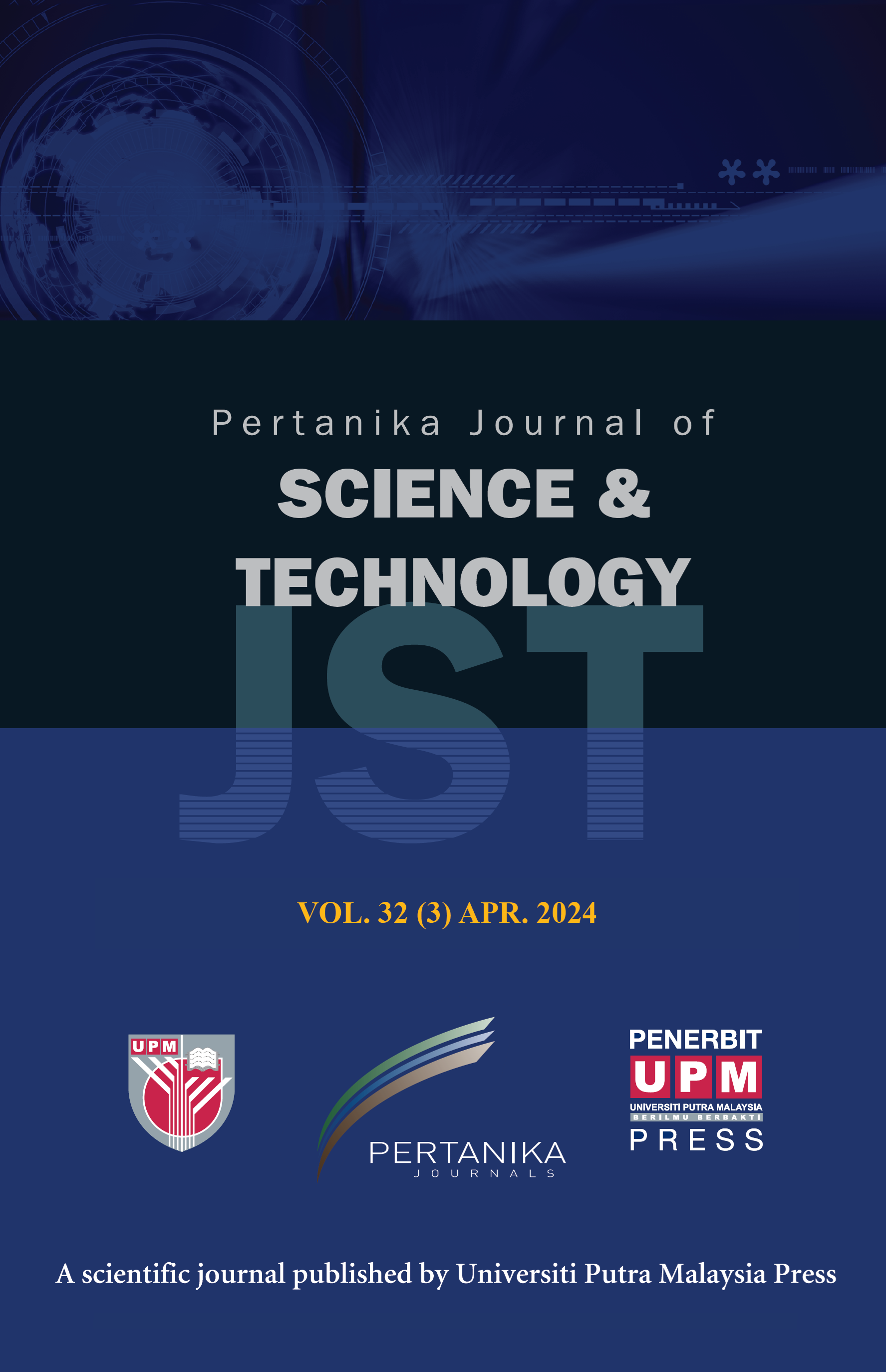PERTANIKA JOURNAL OF SCIENCE AND TECHNOLOGY
e-ISSN 2231-8526
ISSN 0128-7680
Assessment of the Bioavailability of Zinc (Zn), Lead (Pb), Nickel (Ni), and Cadmium (Cd) in the Sediments of the Sungai Buloh Estuaries, Selangor
Aqilah Mukhtar, Mohd Nazri M. Yunus, Nur Amiera Kamarudin, Syaizwan Zahmir Zulkifli and Ahmad Ismail
Pertanika Journal of Science & Technology, Pre-Press
DOI: https://doi.org/10.47836/pjst.33.3.15
Keywords: Contamination, heavy metal, sediments, sequential extraction technique, sustainability
Published: 2025-04-04
A study was conducted on sediment samples from Kuala Sungai Buloh, located within the cockle cultivation area of Selangor. The research focused on assessing the presence of selected heavy metals, including zinc (Zn), lead (Pb), nickel (Ni), and cadmium (Cd). The total concentration of heavy metals within the sediment matrix was determined through aqua regia digestion. Meanwhile, the speciation of these metals was identified using sequential extraction technique (SET). The mean concentrations of Zn, Pb, Ni, and Cd were 130.41 ± 25.61, 29.22 ± 7.81, 13.08 ± 4.96, and 0.166 ± 0.074 µg/g, respectively (p < 0.05). The fractionation distribution of Zn, Pb, and Ni followed the trend [residual] > [oxidisable-organic] > [acid-reducible] > [exchangeable]. For Cd, the trend was [residual] > [acid-reducible] > [oxidisable-organic] > [exchangeable]. Based on the geoaccumulation index (Igeo) assessment, sediments from Kuala Sungai Buloh were categorised as unpolluted to moderately contaminated at selected sampling points for Zn and Pb. The Contamination Factor (CF) suggested moderate contamination levels for Zn and Pb and low contamination levels for Ni and Cd. Additionally, the Pollution Load Index (PLI) classified the area as non-polluted since all values were less than 1. These heavy metals in the river and estuaries of Sungai Buloh are attributed to natural processes, as well as moderate industrial, agricultural, and domestic activities. Understanding heavy metals is crucial for assessing ecotoxic effects in aquatic environments. This knowledge is crucial for safeguarding ecosystems and advancing Sustainable Development Goal 14 (SDG14), emphasising the conservation of life below water.
ISSN 0128-7702
e-ISSN 2231-8534
Share this article

